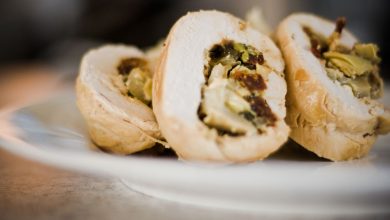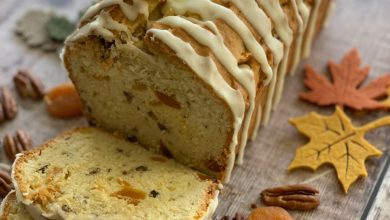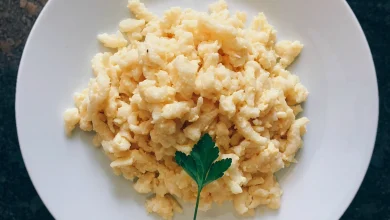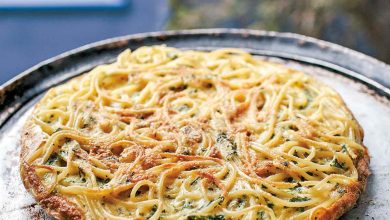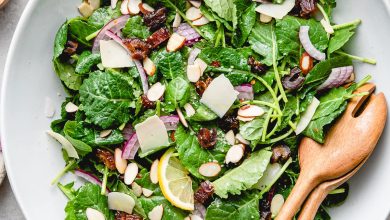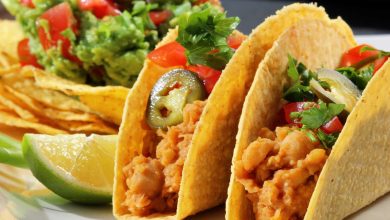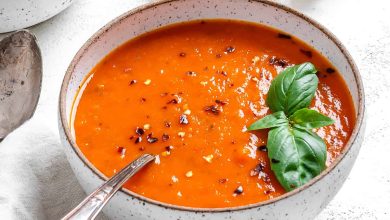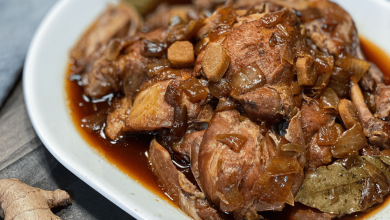Almond Kulich
🍰 Almond Kulich is a delicious dessert with a rich history that’s worth celebrating! 🌰
History:
Almond Kulich is a traditional Russian Easter bread that has been enjoyed for centuries. It’s an integral part of Russian Orthodox Easter celebrations. The word “kulich” comes from the Old Slavic word “kolach,” which means “circle” or “wheel.” The round shape of the bread symbolizes the sun and the cycle of life, making it a meaningful addition to Easter festivities.
Components:
To make Almond Kulich, you’ll need the following components:
-
Dough:
- Flour
- Sugar
- Yeast
- Eggs
- Milk
- Butter
- Vanilla extract
- Salt
- Raisins or currants
-
Almond Topping:
- Almonds (sliced or chopped)
- Sugar
- Egg white
Steps to Prepare Almond Kulich:
-
Prepare the Dough:
- Dissolve yeast in warm milk with a pinch of sugar.
- In a large mixing bowl, combine flour, sugar, and salt.
- Add the yeast mixture, eggs, melted butter, and vanilla extract to the dry ingredients.
- Mix and knead the dough until it’s smooth and elastic. Incorporate raisins or currants into the dough.
- Cover the dough and let it rise until it doubles in size.
-
Shape and Rise:
- Divide the dough into equal portions and shape them into round or cylindrical loaves.
- Place the shaped loaves into greased, tall baking molds or coffee cans.
- Allow the dough to rise again until it reaches the top of the molds, forming a dome shape.
-
Prepare Almond Topping:
- Beat egg whites until foamy and then mix in sugar and almonds.
-
Bake:
- Preheat your oven to the appropriate temperature (usually around 350°F or 180°C).
- Carefully spread the almond topping over the risen kulich loaves.
-
Baking Time:
- Bake the kulich in the preheated oven for approximately 30-40 minutes, or until they turn golden brown and sound hollow when tapped on the bottom.
-
Cool and Decorate:
- Allow the baked kulich to cool completely on a wire rack.
Total Time Needed:
The entire process of making Almond Kulich, from preparation to baking and cooling, can take around 2 to 2.5 hours, depending on the specifics of your recipe and your experience in baking.
So there you have it, a delightful treat rich in history and flavor that’s perfect for celebrating Easter or any special occasion! 🐣🌼🍞
I don’t have access to real-time data, but I can provide you with some general information about the nutrition facts and health considerations for Almond Kulich.
Nutrition Facts (per serving, values may vary depending on the recipe):
- Calories: Approximately 200-250 calories per slice.
- Fat: Around 7-10 grams.
- Carbohydrates: 30-40 grams.
- Protein: 5-7 grams.
- Fiber: 1-2 grams.
- Sugars: 10-15 grams.
- Sodium: 100-150 milligrams.
Health Information:
-
Calorie Content: Almond Kulich is a moderately calorie-dense treat. Be mindful of portion sizes to manage calorie intake.
-
Fat: It contains a moderate amount of fat, primarily from butter and almonds. While fat is an essential nutrient, it’s important to consume it in moderation.
-
Carbohydrates: The main source of carbohydrates in kulich is from flour and sugar. These provide energy but can also contribute to blood sugar spikes if consumed excessively.
-
Protein: Kulich contains some protein, which is essential for muscle health and overall well-being.
-
Fiber: While not a significant source of fiber, there are small amounts due to ingredients like raisins. Fiber aids in digestion and helps you feel full.
-
Sugars: Kulich contains added sugars, which should be consumed in moderation. High sugar intake can lead to various health issues.
-
Sodium: The sodium content is relatively low, which is generally a positive aspect of the recipe.
Health Tips:
- Enjoy Almond Kulich in moderation as an occasional treat, especially during festive occasions.
- Consider making healthier variations with whole wheat flour and reduced sugar.
- Be mindful of portion sizes to manage calorie intake.
- Pair with a source of protein like Greek yogurt to create a more balanced snack or dessert.
Remember that specific nutrition facts may vary depending on the recipe and ingredients used, so it’s a good idea to calculate the exact values if you have dietary concerns or restrictions.

